
Drip Emitters
Selecting the Correct Type
&
Standardizing each Zone
Selecting the Correct Type
&
Standardizing each Zone
Garden Tip
TB1150
TB1150
Technical Bulletin Series

|
Drip Emitters Selecting the Correct Type & Standardizing each Zone |
Garden Tip TB1150 |
Technical Bulletin Series
|
The first thing in planning or upgrading your irrigation system is
making the best selection for which type of "drip emitter" you intend
to use. As you will read later in this bulletin, mixing different types
of emitters on the same valve or zone will create added problems.
So, picking the type that will serve all the plants on any single zone is very important.
|

|
|
Larger shrubs and trees require a greater number of emitters with these
being well distributed throughout the Rootzone. In order to establish a
root system with enough capacity to nourish whatever sized plant the spacing
MUST take into consideration the composition of the soil. When the soil
is sandy (and drains well) the emitters need to be closer. When the soil
is high-clay, the emitters are spread out more to allow that slow draining
soil to absorb the water. Placing too few emitters will cripple root development.
Using a large quantity of single-independent emitters can create a complex installation, and with each emitter comes the added opportunity to trip on it when walking in the area. This I believe is why spraying-adjustable Shrubblers are so often selected. |
Too often "Shrubblers" like this are selected and used in order to provide an amount of water that would be equal to 10 or so 1 gph single emitters. And they are adjustable. |
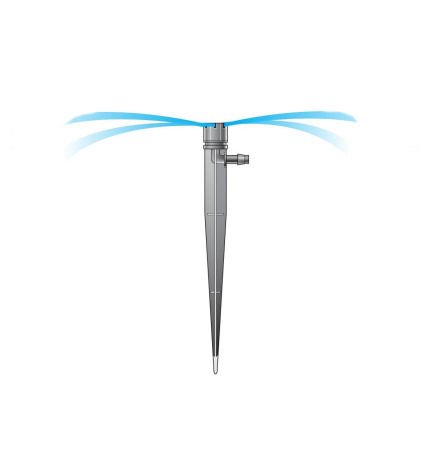
|
This type of emitter it really is NOT drip - it is spray is frequently the cause of plant stress and ultimately failure. Here are some reasons:
A.
|
Over time, when soil moisture is severely limited in its depth and surface area something has got to give! |
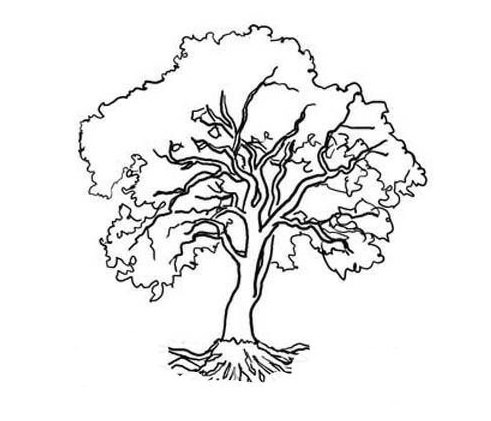
Roots that look more like this
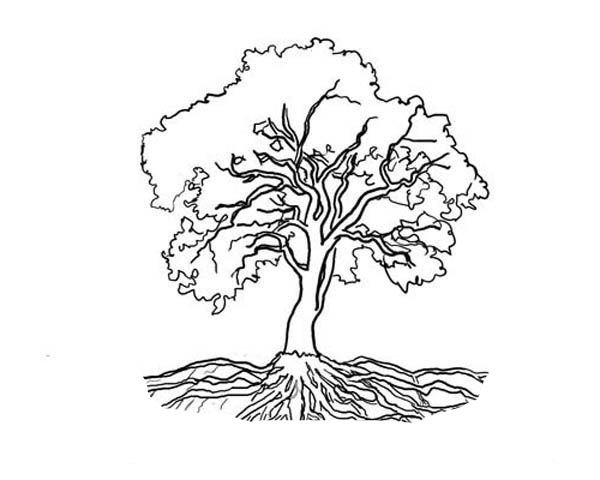
Instead of looking like this
|
More reasons that Shrubblers aren't the right choice for larger shrubs and trees:
B.
C.
D.
|
|
Here are more options for High-Flow-Rate Devices
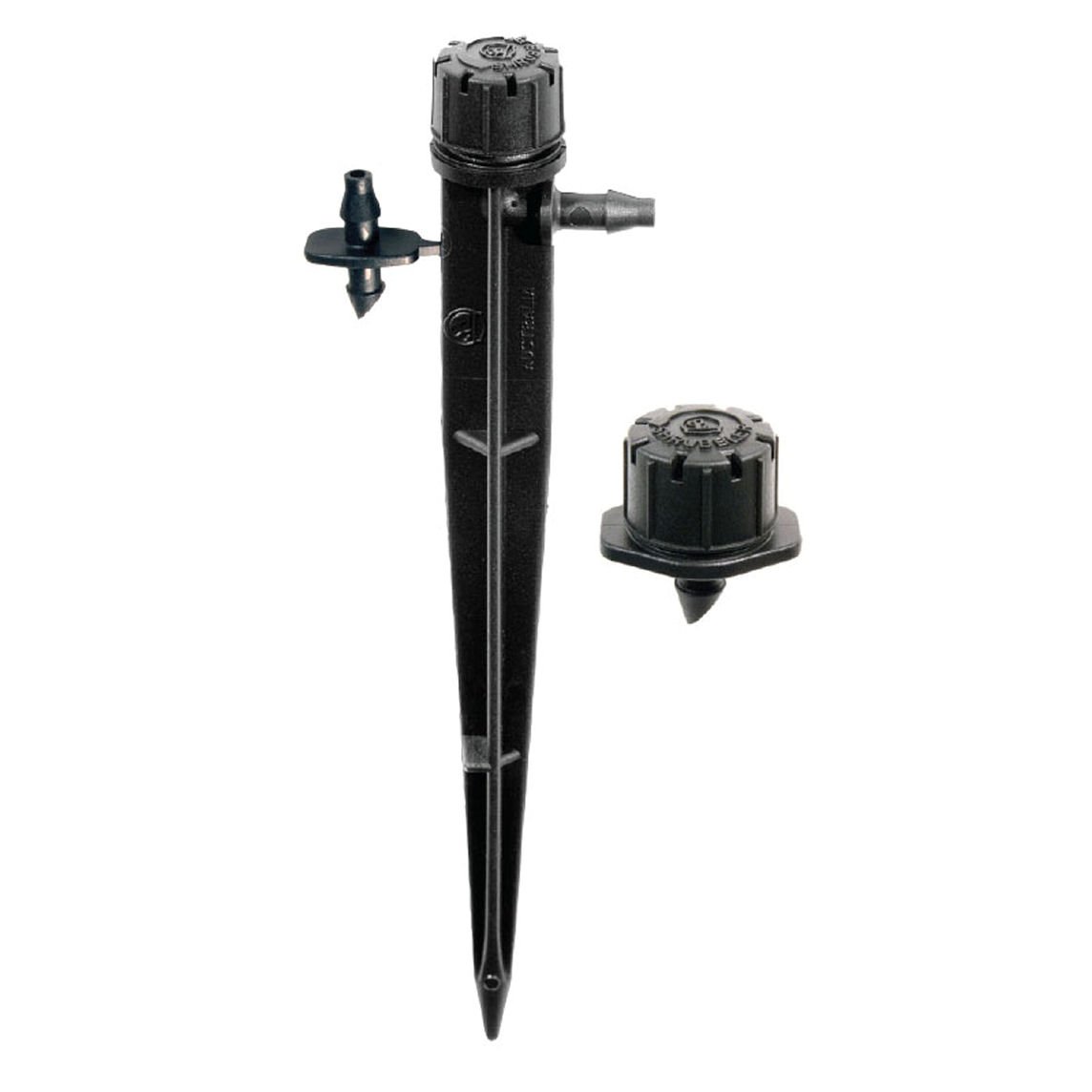
High Flow Rate (3 to 15 gph) ¼ inch Shrubbler |
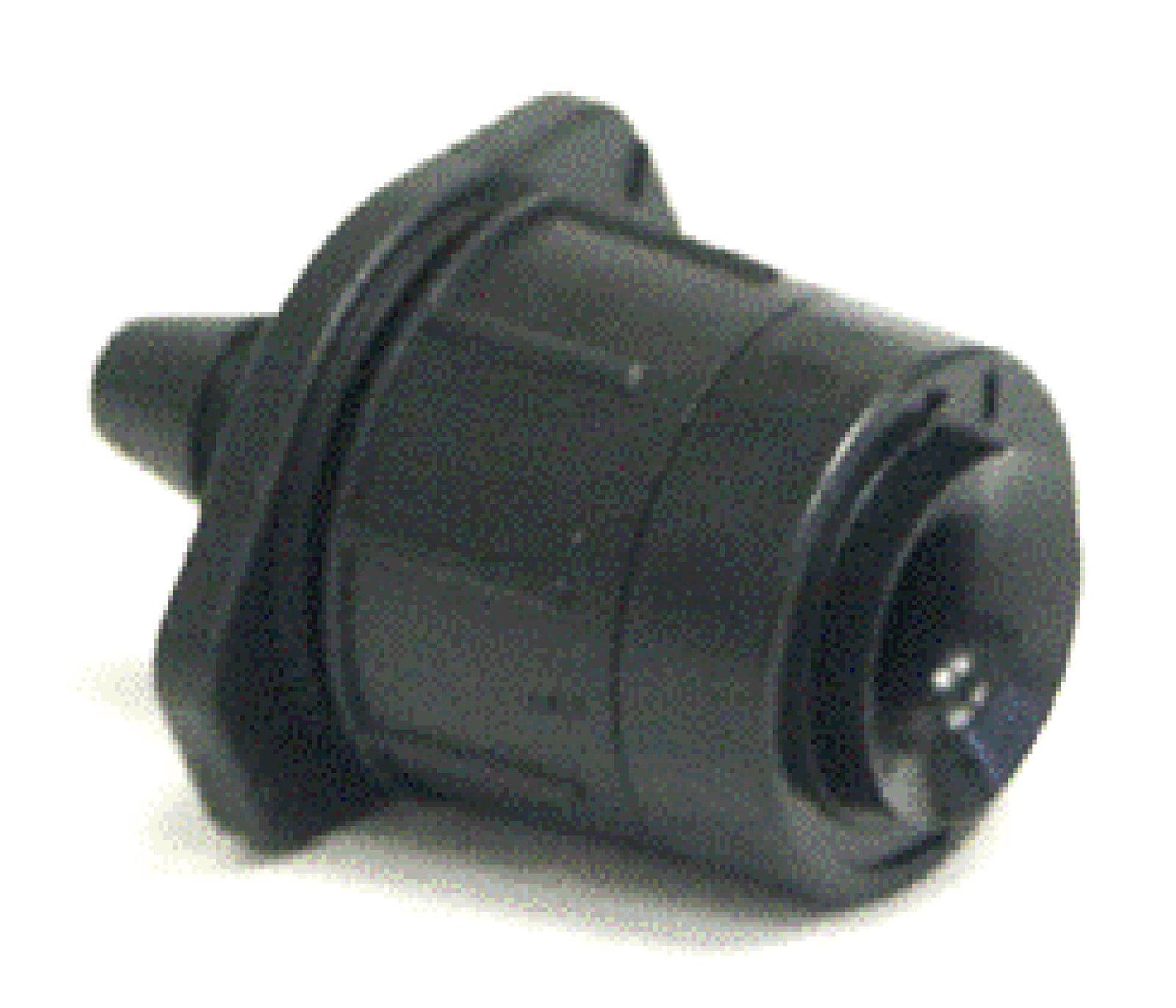
High Flow Rate (3 to 20 gph) ¼ inch Bubbler |
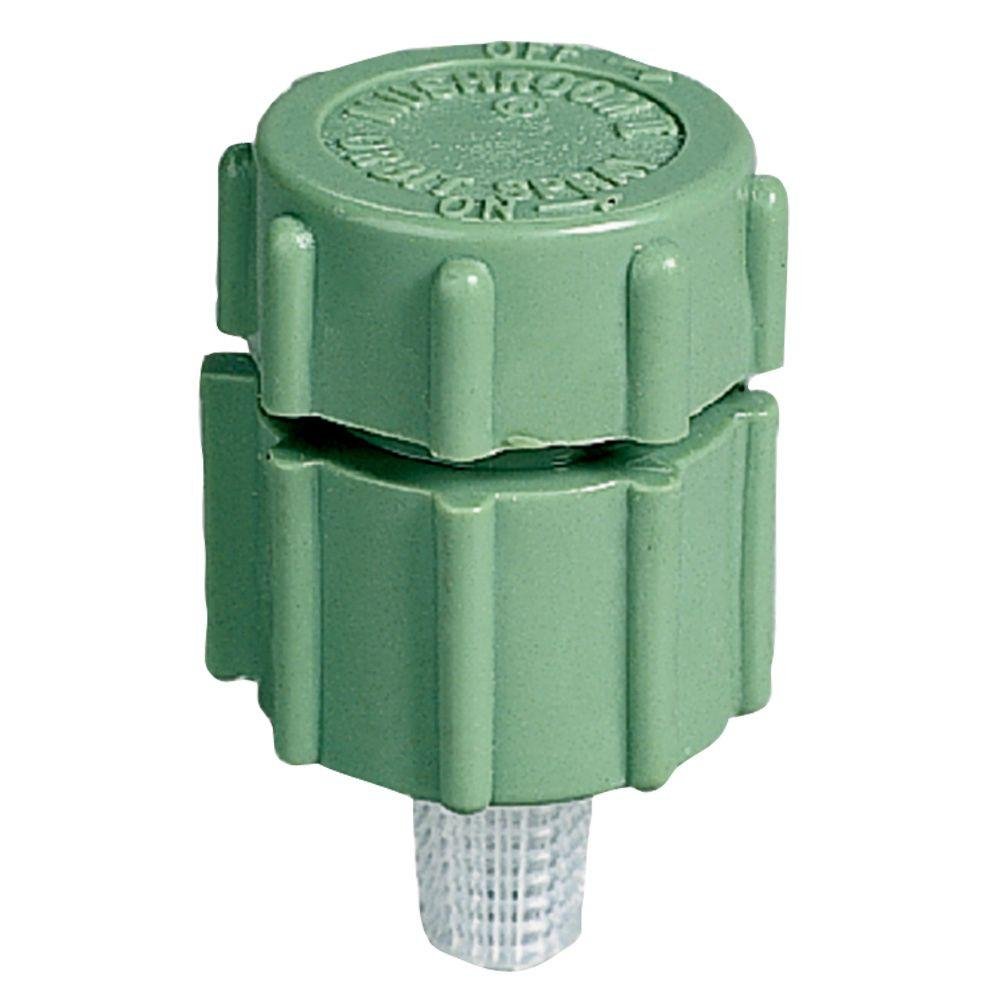
High Flow Rate (0 to 30 gph) ½ inch Bubbler |
Dripperline (with emitters fabricated right into the tubing) offers a
simple solution to these issues and is very economical. It comes in ¼ inch
and ½ inch diameter. The ¼ inch has options of 6 or 12 inch spacing between
emitters. The ½ inch diameter offers 12 and 18 inch spacings. Simply hook
one end up to the feeder line and plug the other end. Space the rows appropriate
for the size plant. Secure their position if you like and cover them with
organic or rock mulch. Each emitter puts out approximately 1 gph.
|
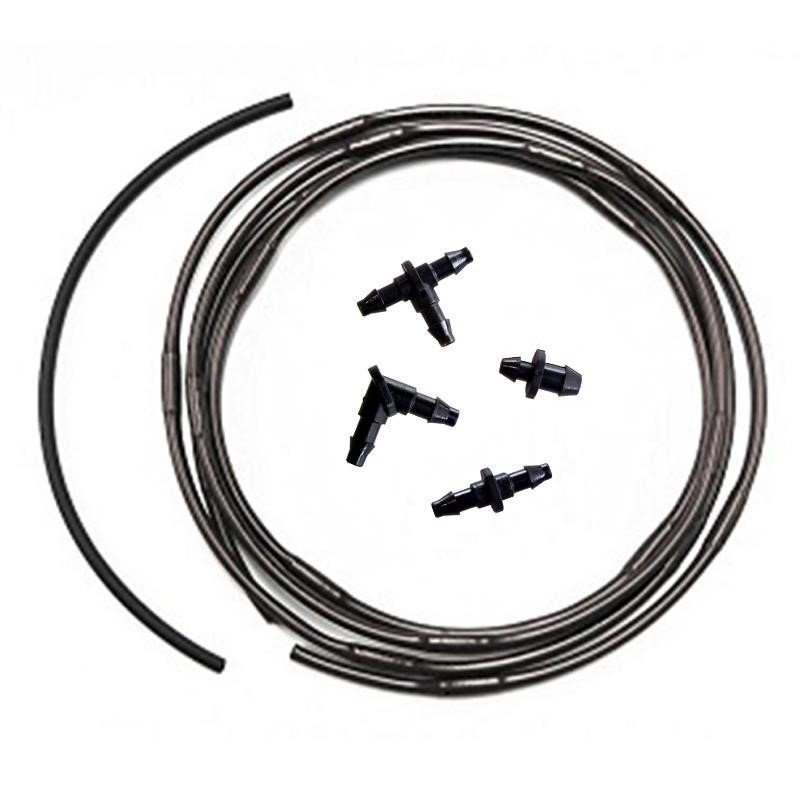
Dripperline with "inline" emitters 
Closeup of a single emitter in a dripperline |
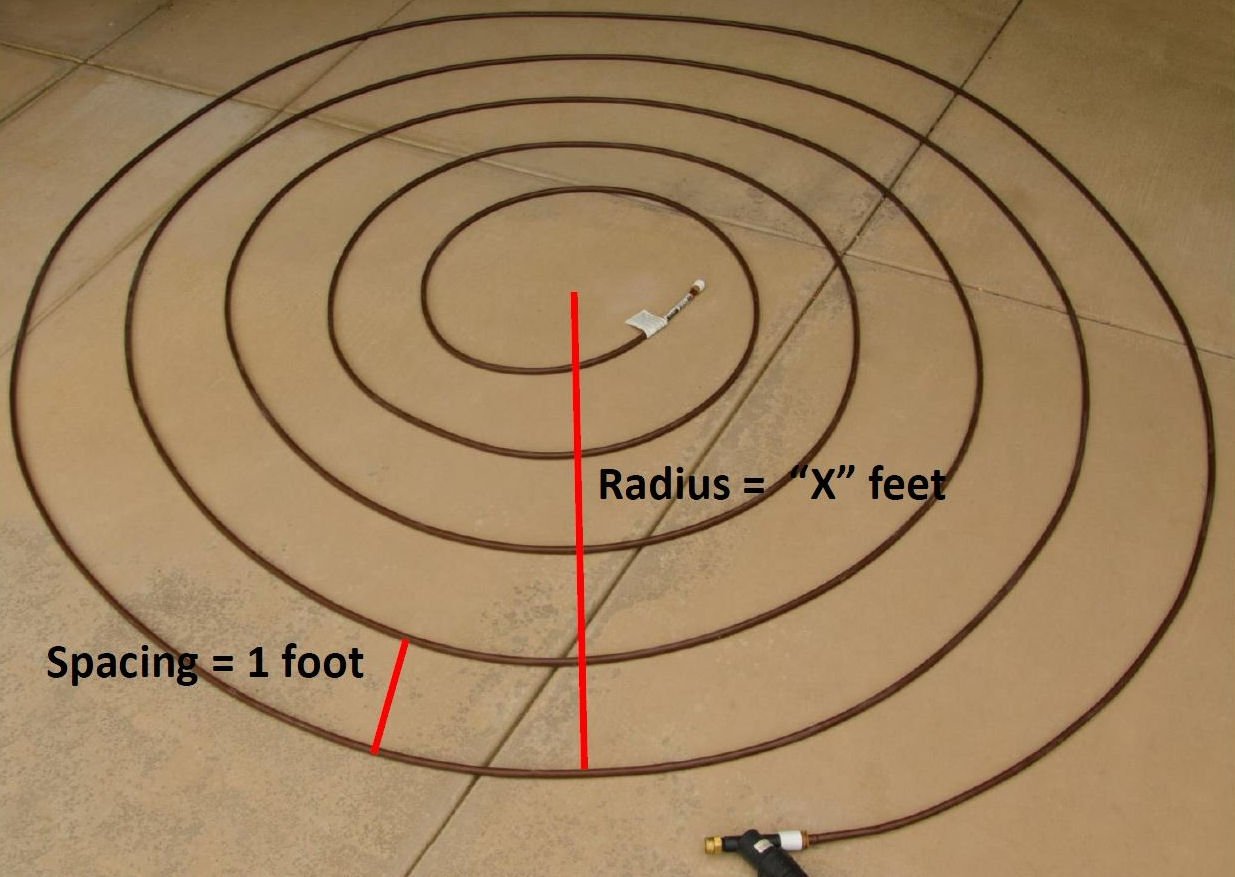
Spacing for large shrubs and trees |
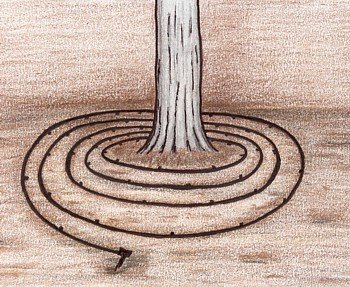
Typical spiral of dripperline around a tree
|
By creating a "spiral" of Dripperline around a shrub or tree,
and spacing each row by between 6 and 12 inches, you will have
created an excellent water and moisture distribution pattern
all throughout the rootzone surface area. With the slow rate
feed of these emitters, the water soaks deep, and total water
use is minimized.
|
|
Ideal irrigation distribution most closely 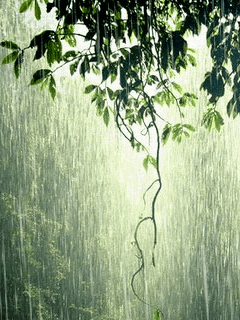
approximates rainfall! Dripperline; economical and effective |
|
There are many other options for Slow Flow Emitters - here are a couple - 

Flag Drip Emitter (1 to 4 gph) PC Drip Emitter (0.5 to 2 gph) |
STANDARDIZE! All Emitters on the same zone should have similar flow rates! |
A frequent problem I have observe during on-site consultations is "mixed" emitters.
Shrubblers or fast flow rate emitters on the same zone with drips (slow flow rate).
Emitters that "spray" are not drips. Sprays are intended for proving surface moisture
(annual flowers and turf). Drips are intended for deep penetrating moisture, required
by shrubs and trees.
If you have these different types mixed together on the same zone, some plants are going to be over-watered while others may be under-watered. If you reduce the flow on a high-rate emitter to match a drip it is likely to perform erratically, due to its operation being at the border of its range. |
Whichever type of emitter you select, you really need to stick with that type throughout any single zone or valve. This is what is meant by "Standardizing your Emitters"! Have you taken a stroll through your landscape to inspect your drip irrigation? You need to check for adequate emitters count and coverage for each plant as well as for plugged emitters. DO THIS EVERY SPRING! |
|
Advantage of Slow Rate drips: These are often pressure compensated "PC".
This means if you decide to add a few extra to the line (more plants)
the flow rate (for each) will remain constant. The water for the new plants
will not be at the expense of the established plants. Whereas the limit for
high rate Shrubblers on one zone is typically 25 (if fully opened), it is
practical to have as many as 200 slow rate drips on the same zone without
complications. Slow flow rate drips will allow much deeper penetration of water,
giving you plants with deeper roots. Deep root systems mean healthier more
drought tolerant plants.
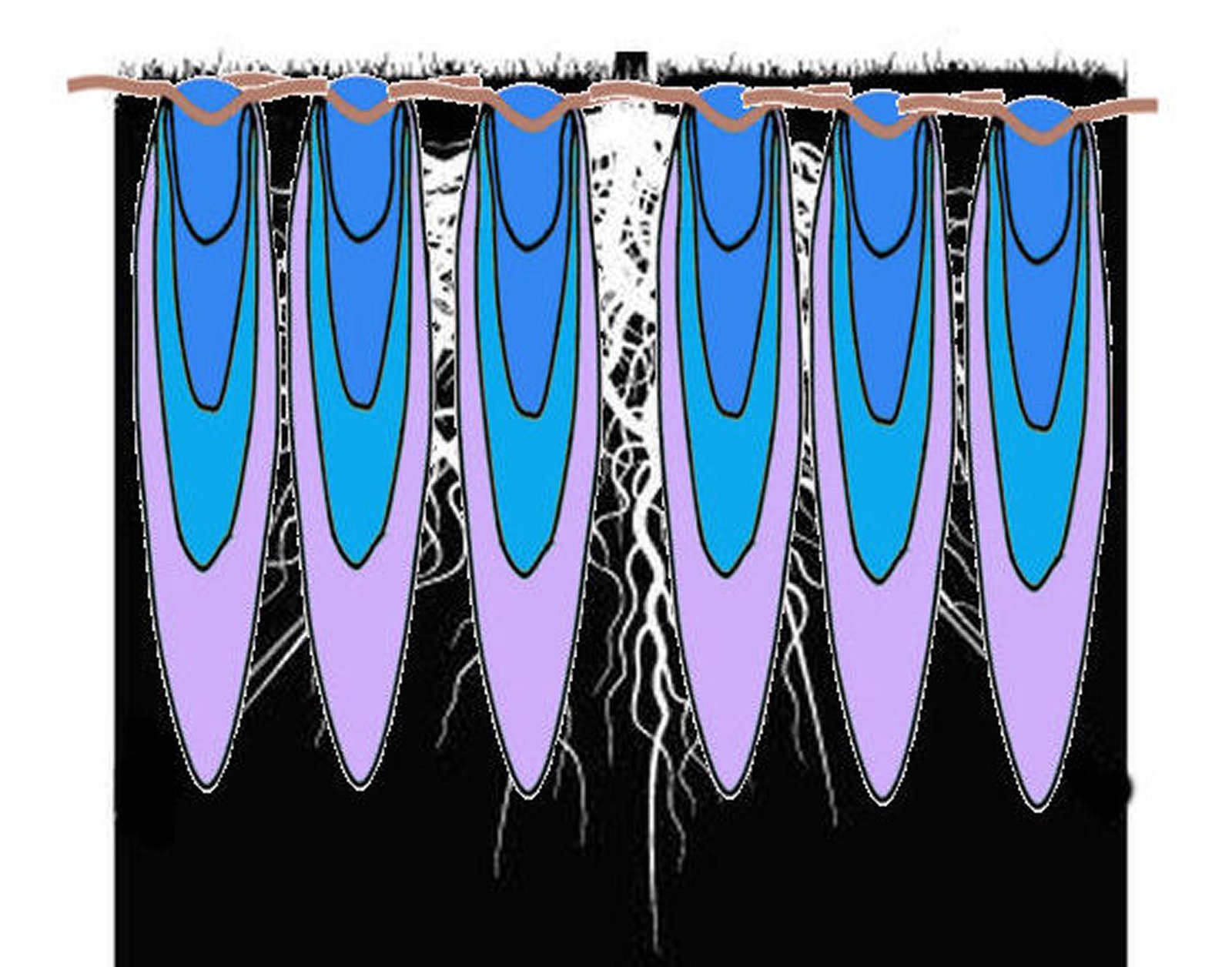
The best watering for shrubs and trees is slow and deep. Expanding the
watering zone as the plants mature and routinely inspecting for trouble.
Set your clock to 45 minutes or more with slow rate drips, and avoid
frequent every day scheduling, even in the heat of summer! With deep roots,
plants won't wither in a single day, and the time off allows them to breathe.
|
|
If you do happen to have your trees or shrubs on the same zone as
your lawn, this creates a situation with a very complex solution.
I recommend that you contact a "Soil and Irrigation Specialist" and
ask for advice specific for that situation. A good answer would be too
long and complicated for a written article like this.
|